"One can speak poetry just by arranging colors well."
Vincent Van Gogh
When teaching art, one of the first things that’s taught is the Element of Color.
We’re fascinated by rainbows from a young age, and there’s a good reason why black light art shows are all the rage with their glowing neons.
Color is beautiful – and a wonderful way to introduce kids to the world of art – so we recommend teaching it first.
But how to teach color is different if you’re teaching a Kindergartner or a 6th grader.
To celebrate our PEP Curriculum – all about the Elements of Art & Principles of Design, we’ll be taking a dive into the different ways that we can teach these ideas to kids – so that they’re fun for kids – AND fun for you. We’ve broken down the ages and stages the way we do in our Glitterbombers membership, by Beginner, Intermediate, and Advanced skills.
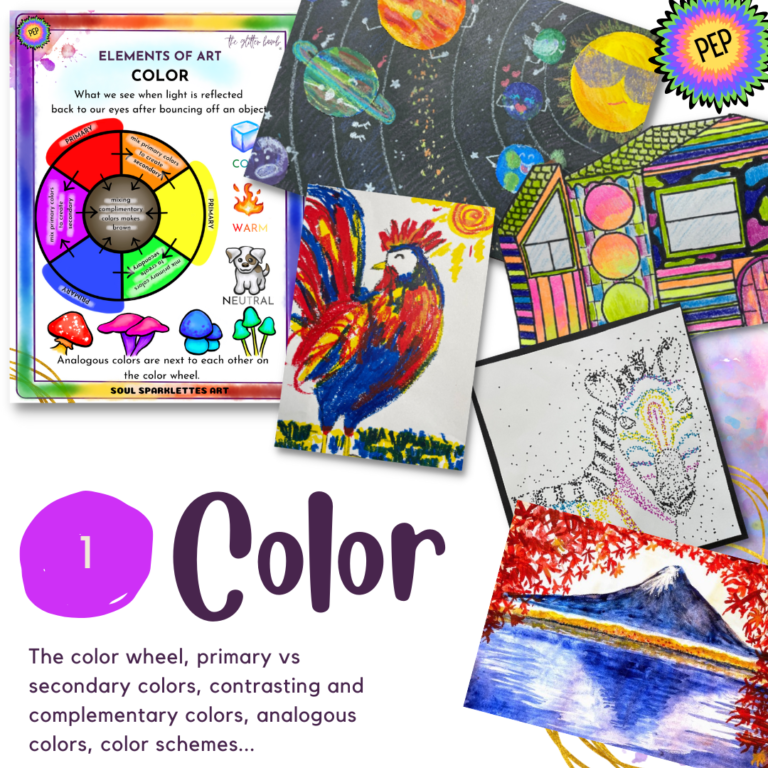
Ages & Stages: What to Teach and When
🟢 Beginner (K-2nd)
- Primary colors – what are they, and working with them in a piece of art
- Mixing secondary colors from primary colors
- Understand and use complementary colors
- Color wheel – what it is, how to use it, and the creation of one
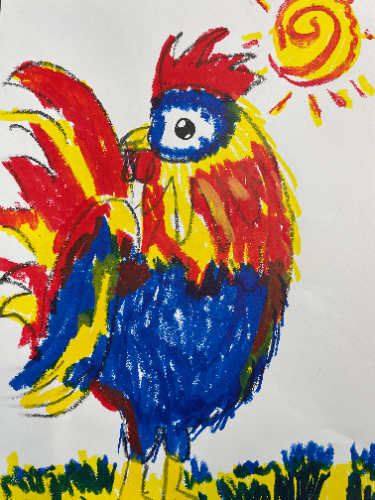
🔵 Intermediate (3rd-4th)
Children already know their color order in this stage, as well as what a primary and secondary color are. Now it’s time to go a little bit farther in color theory.
- Understand and use warm/cool colors and analogous colors in art
- Blend colors together to create new colors and tints
- Learn about optical color mixing – or ways that colors can mix without the paintbrush
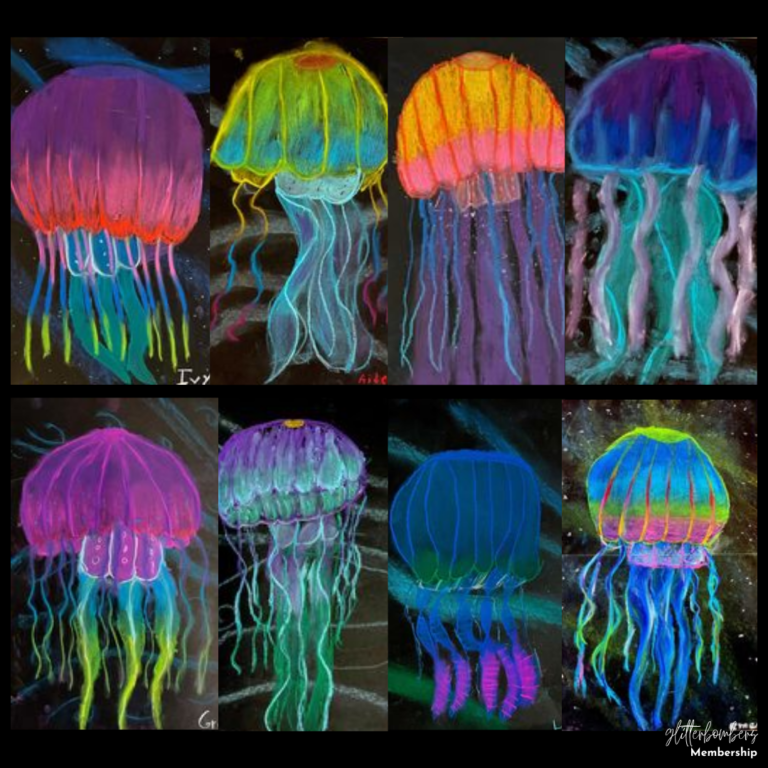
🟣 Advanced (5th-7th)
Here, children start to explore what they know about color and how it can be used in their own personal art.
- Explore the definition of the word “colorful” and try to create something that is colorful
- Understand color triads and tertiary colors
- Explore color schemes – how to determine one, and how to repurpose one from a painting or picture into their own work of art
- Challenge themselves to use a limited palette of primary colors or a certain color scheme while creating
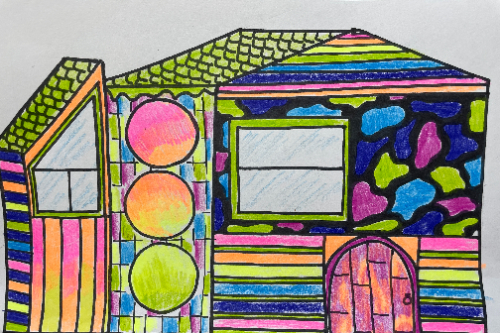
5 Books for Teaching the Element of Color
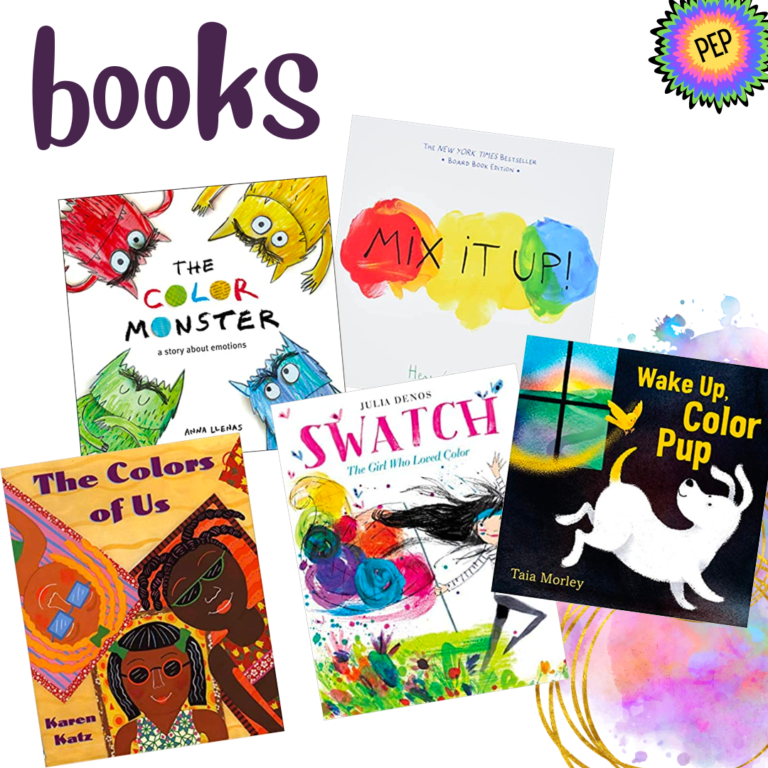
Here’s 5 of our favorite books for teaching color (there’s more inside our PEP Curriculum inside the Glitterbombers membership). These are Amazon afflinks which means we earn a small percentage that goes towards coffee at no additional cost to you.
Ready to add Color to your Curriculum?
Try the La Casita art project, designed to get you singing before you’re done, and utilizing bright, vibrant colors in a tropical color scheme.
Join the Glitterbombers Membership!
You’ll find hundreds more art projects, videos, and resources at your fingertips for whatever you’re studying, or whatever art concept you’re ready to teach. Head here to hop on the waitlist and find out when we open next!


